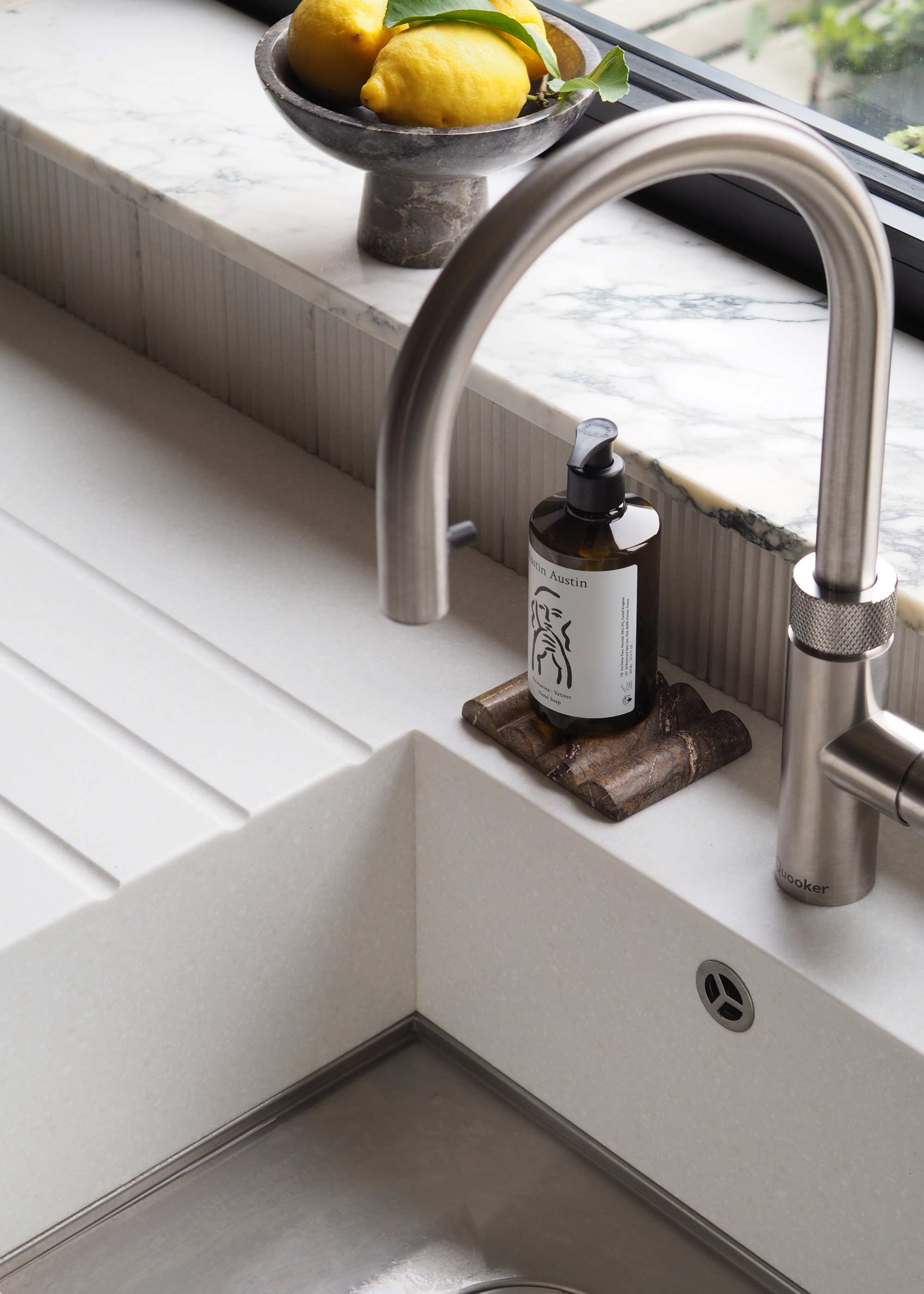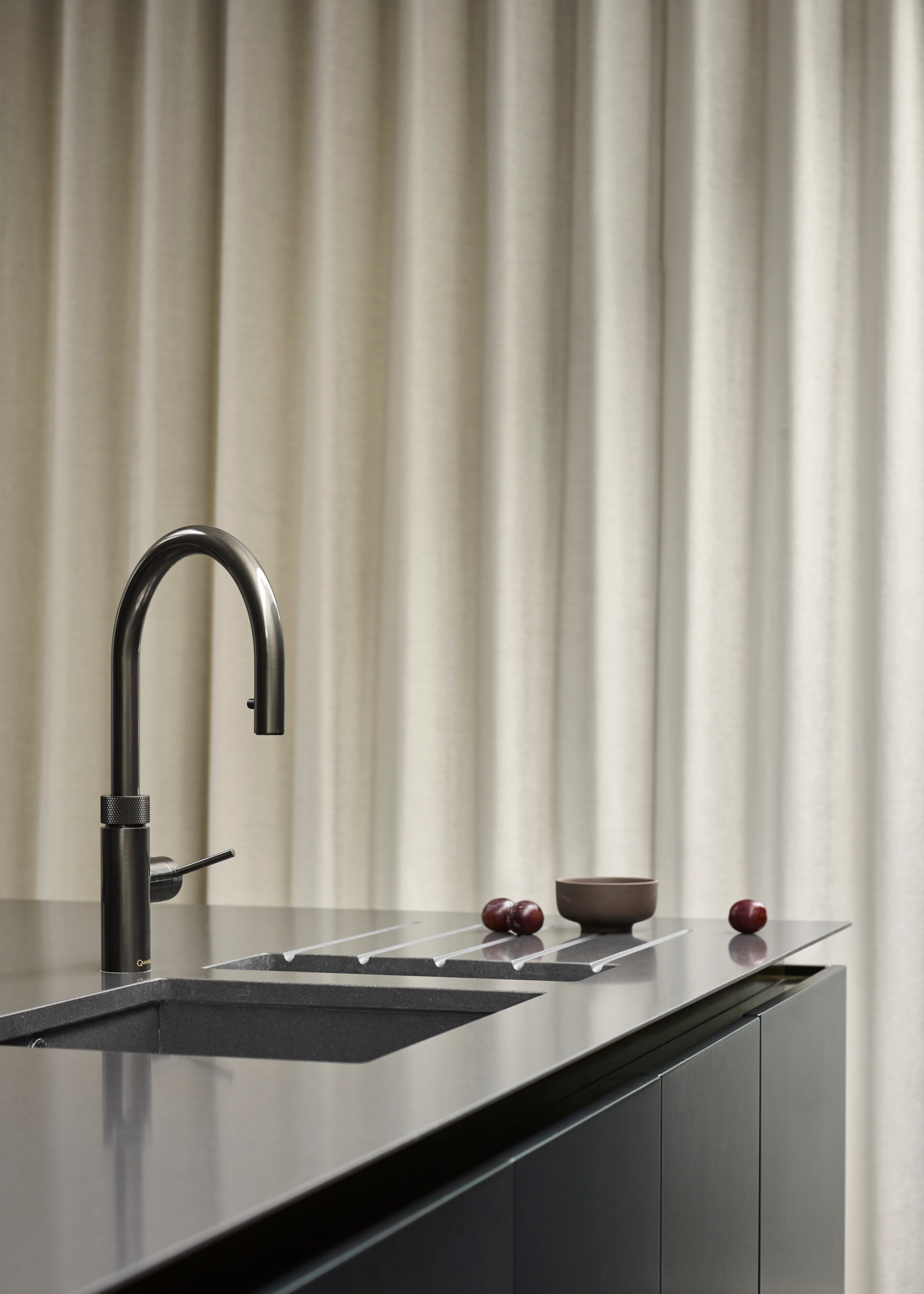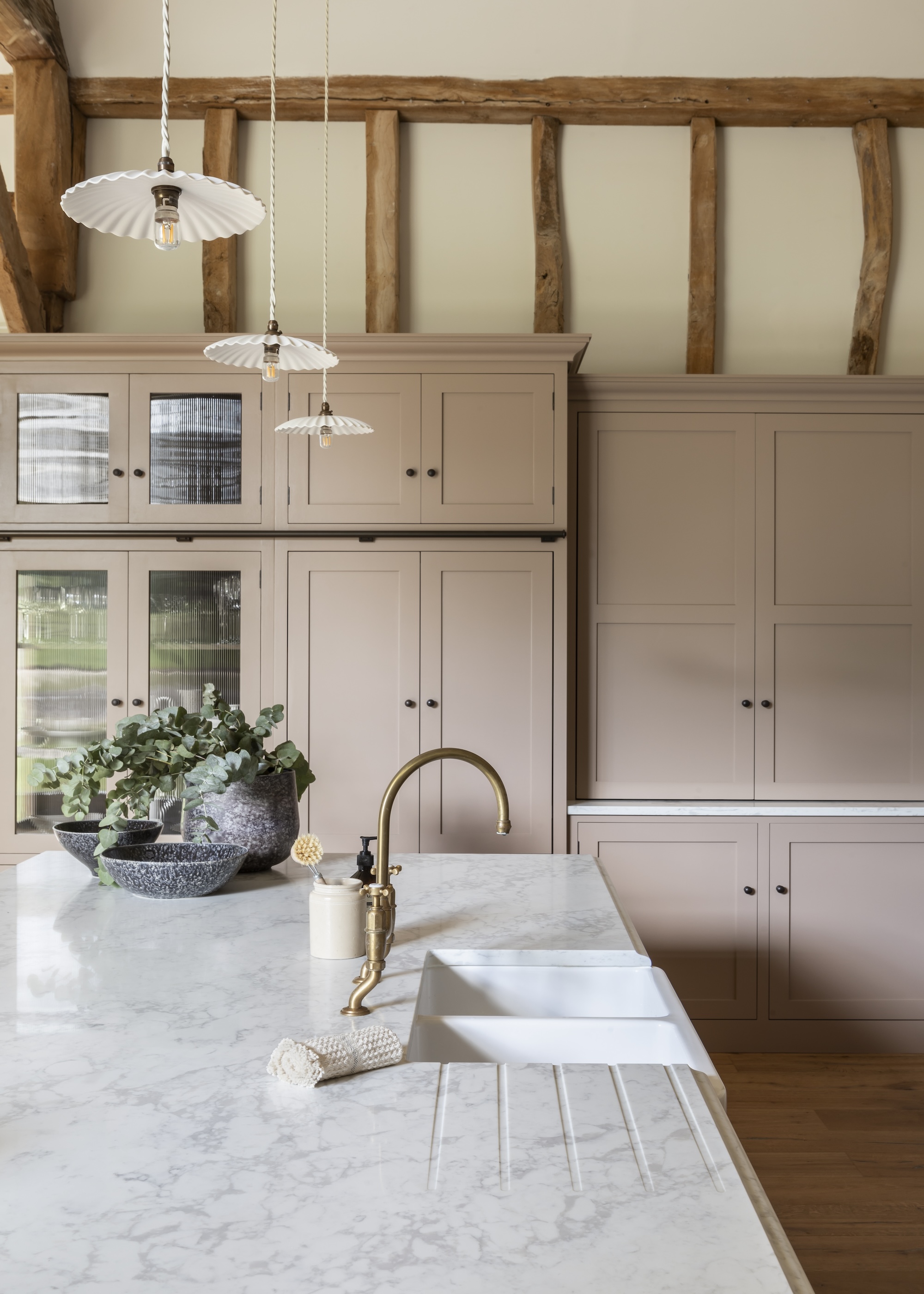
I loathe washing-up. I know, it sounds bad, but I hate it. I hate the soggy dishcloths, the inevitable puddles on the floor, and everything else. My general plan of action is: I do the cooking, you do the washing up. However, I think this kitchen feature could make washing up slightly more enjoyable.
I'm talking, of course, about sink draining grooves. I've spotted them on luxurious kitchen countertops for a while now, but I was never sure if I really needed them. "It's a question I was asked during the consult on my kitchen countertops, and I just sort-of said 'yes' in the moment, without really thinking about it," Livingetc's editor Hugh Metcalf tells me when I ask about his own choice. "But, if I'm being honest, they do have an effect on how the space looks that needs to be considered, and on reflection, scrolling through some of the most luxurious homes we feature, you don't see them as much as you'd expect."
With those words ringing in my ears, I decided to ask the experts what they thought, yet the answer, on the whole, was clear. "Yes, we often recommend incorporating draining grooves as part of a fully integrated sink and worktop design," explains Jonathan Middel, senior designer at Roundhouse. "They provide a clean, functional solution for water runoff while maintaining the seamless, uncluttered aesthetic that many of our clients look for in a contemporary kitchen."
But, is their functional value enough to make up for what it does to your kitchen countertop's looks?
What Are Draining Grooves?

Even if the term is not familiar to you, likely, you've already encountered a draining groove or two in your time. They're a handy kitchen addition that is becoming increasingly popular.
Typically, draining grooves appear as straight indentations in your work surface, leading directly into your sink, and extending out along your worktop. The idea is that they provide a channel for any excess water from your washing up to flow straight back into the kitchen sink, avoiding soggy surfaces and any potential for floor drippage.
While straight lines are the most common iteration of this trend, they can be customized to fit your space. So, if you prefer your drainage lines to be organized in a fan formation or a horseshoe loop, it's entirely possible to achieve this.
What Are the Pros and Cons of Sink Draining Grooves?

Although the benefits of these grooves may seem immediately apparent, there's more to it than meets the eye, and this small change can have a surprisingly noticeable impact.
"Draining grooves offer both practical and design benefits," explains Jonathan.
He continues, "Functionally, they allow excess water from washed dishes to drain directly into the sink, keeping surrounding surfaces dry and hygienic."
But beyond this obvious, and extremely useful, functional benefit, they can also bring a more streamlined, organized look to your kitchen, allowing you to declutter your countertops.
"Aesthetically, they rule out the need for a separate draining board, so the space can be a more minimal look — ideal for open-plan or design-led kitchens where every detail matters." As they are built into your worktop, they are practically invisible and easily blend into the surface, unlike the ugly drying mats of the past.
However, editor Hugh can see the drawbacks of them, mostly from a design perspective. "They're not super intrusive, but draining grooves do, all of a sudden, throw off the symmetry around the sink," he tells me, "and while they're not too disruptive to the eye, they are fussier than countertops without grooves in. From a practical perspective, in using my kitchen, it's weird how their presence creates a psychological 'dead space' — though they're not stopping me from doing so, I feel like I won't use that section of countertop for something like food prep, despite my small kitchen not being super flush in square footage."
"If I had my time again, I'm not sure I'd choose them again, and just make sure I wash and dry as I go — it's not a huge sacrifice to make," he adds.
The Best Materials for Sink Draining Grooves

As useful as these grooves are, not all kitchens are equally suited for them. The plausibility of adding drainage grooves lies entirely in your kitchen countertop materials.
As Jonathan explains, "Draining grooves are best suited to solid, non-porous materials like quartz, granite, sintered stone, Corian, or stainless steel kitchens."
Porosity refers to the amount of liquid a material can absorb and hold. Non-porous materials, like quartz, have very little void space, leaving no room for liquids to settle into, whereas porous materials, like a sponge, are full of tiny holes for liquids to flow into.
For this purpose, the less porous the material, the better. "These surfaces can be precision-machined and will stand up to consistent moisture exposure without compromising structural integrity," explains Jonathan.
However, he continues, "Materials such as wood or laminate are less suitable, as contact with water over a long time can lead to swelling or degradation over time, leaving horrid stains on the material."
Kitchen Essentials for Your Home
A great rental-friendly option that is similarly minimalist in style, this stone drying mat has impressive absorption powers and looks nice and sleek on your work surface.
If you're going through the effort of keeping your countertop tidy, you may as well extend that attitude to your sink. This clever caddy has space for everything you need, and it looks good, too.
Bosign is making washing up stylish with this dishcloth holder. The smart design has space for your towel to air dry, so you don't have to deal with damp cloths, and the water-resistant wood base is a great place to store your soap and brushes.
And if you really want to romanticize your washing-up duties, Diptyque's dishwashing liquid is bound to do the trick. Plus, no one's stopping you from filling it up with fairy once it's done...
Who knew Scandi-brand HAY did dishcloths? Certainly not me, or else they'd have been in my kitchen for months now.
Complete the look with a complementary tea towel, another hit from the Copenhagen design house.
FAQs
How Much Should Draining Grooves Cost?
I know what you're thinking: how much is this going to set me back? Well, you'll be glad to know that the cost is surprisingly low.
"The cost of adding draining grooves generally ranges from £100 to £250, depending on the material and complexity of the design," says Jonathan.
He continues, saying "For example, a standard set of five grooves in a composite or quartz surface typically costs around £150 including VAT, but this can increase for more bespoke configurations or when working with premium or harder-to-fabricate materials."
So, do you need sink draining grooves? Well, of course, it depends.
As Jonathan says, "We may advise against draining grooves if a client does a lot of handwashing and needs a more robust draining area — like a separate drainer or tray system — or if they’ve chosen a material not well-suited to frequent exposure to water."
But, on the whole, I think these make an excellent addition to your modern kitchen.







